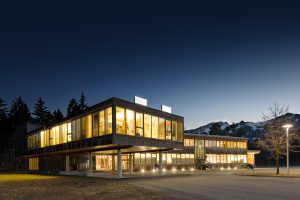It’s been almost 9 months since I provided my last update to the current state of affairs in D.C. with respect to energy efficiency legislation. We’ve hit a couple potholes in the road (thanks Polar Vortex) during that time with standoffs over the budget, debt ceiling and ultimately a government shutdown, but hey, we’re back in business and onto greener pastures.
The House of Representatives has led the charge after clearing the aforementioned hurdles and overwhelmingly passed H.R. 2126, the Energy Efficiency Improvement Act.
You might say, “Miles, that’s last month’s news, what are you going to tell us that’s different?” Well, if you’ve read my prior blogs, you’ll remember I have a penchant for linking IT and energy efficiency policy and we’re going to explore how this current legislation manages to address both by summarizing key sections of the bill. You may recall the previously introduced Energy Efficient Government Technology Act (H.R. 540); well, it includes that and a whole lot more.
Developing a strategy
Federal agencies will have one year to develop an implementation strategy for the maintenance, procurement and utilization of energy efficient and energy saving IT. The strategy should include best practices and measurement and verification techniques (M&V) and tie into the established performance goals (see below). Let’s remember that agencies haven’t been given much guidance outside of Energy Star and EPEAT which speak to products, not strategies and architectures.
Administration of the strategy
The technologies and practices encouraged are Advanced Metering Infrastructure (AMI) and related building energy management, energy efficient data center strategies and methods of increasing asset and infrastructure utilization (too open for my taste), advanced power management tools, telework and last, but not least (drum roll please!), mechanisms to ensure that agencies realize the energy cost savings brought about by implementing energy efficiency technologies (i.e., ESPC). In my 10+ years working with the federal government, I have yet to see any OCIO organization get financial credit for implementing an energy efficient product or architecture. A mechanism like an ESPC enables this to happen.
Performance Goals
The Director of the OMB will have 6 months to establish the goals for agencies to be measured against. The CIO Council will weigh in with best practices to meet these goals which shall include consideration of the use of ESPC’s and UESC’s (now we’re cooking with gas!).
Reporting
As with all things government, agencies will be required to report their progress against these goals with the use of scorecards. I’m envisioning something similar to what agency energy and sustainability managers submit to OMB each year which charts their progress against EPAct 2005 and EISA 2007 goals.
Stakeholder Involvement
Leverage government resources in addition to industry and industry associations that promote energy efficiency for data centers and IT. The end goal is collaboration and obtaining a better understanding of how leading edge private sector firms operate their IT and data centers. I see the Green Grid and I2SL as being the best suited to be able to help contribute immediately. This almost makes too much sense.
Study
Provide an update to the report to Congress from 2007; Server and Data Center Energy Efficiency. The key elements are to compare the old estimates and projections with data from 2007 to 2014. It also calls for analysis of impacts from virtualization, cloud, mobile devices, social media and big data on data center energy usage along with updated projections, recommendations and best practices through FY2020.
Data Center Energy Practitioner (DCEP) Program
Reinvigorates the DCEP program and provides guidance to agencies on how often they should be evaluated by DCEP certified professionals, ideally employed by the agency. This program had a strong beginning, but hasn’t seen much growth in recent years.
Open Data
This calls for an initiative to share federal data center energy usage for purposes of spurring further innovation, optimization and consolidation. The Data Center Maturity Model is to be considered for this initiative.
Specifications and Metrics
This section of the bill speaks to harmonizing global specifications and metrics for data center energy efficiency. You might recall the federal government officially adopted Power Usage Effectiveness (PUE) in 2010. It goes one step further to leave the door open for a utilization metric for both equipment and facilities. An earlier version of this bill called out TUE (Total PUE) and ITUE (IT PUE) developed by the collaborative effort of the Energy Efficient HPC Working Group, but I think the recently announced Data Center Energy Productivity (DCeP) metric might have a leg up.
Summary
My thoughts are that this is a very comprehensive section of the legislation. Sure, it’s not perfect, but it has aged like a fine wine while it sat on the shelf. With all of the mystery surrounding FDCCI and the inability to show energy savings, I think our Representatives have put something forward we can get behind. We now have to wait and see what the Senate will do and if they’ll push forward a related, and recently reintroduced bill (S.2074).
I’d love to hear your thought in the comments section. Could this part of the bill have been better or is it too rigid to pass? Is our government headed in the right direction with regards to energy efficiency and IT?



Conversation
Miles, good reading and great perspective! Moving a bit slow for me but we’ll see. Some ride though. Kind of like what the snail said when he jumped on the turtle’s back….Woo Hoo!
Thanks for your comments Tom and I definitely appreciate your analogy. I’m hoping the Senate moves on this before the end of summer.